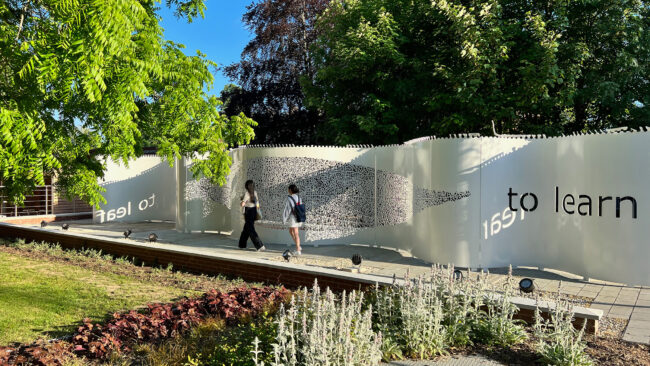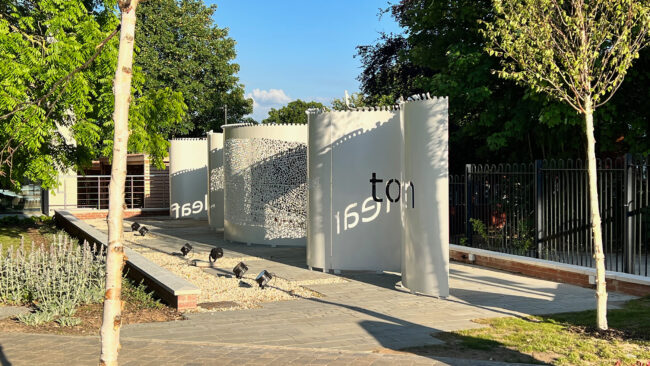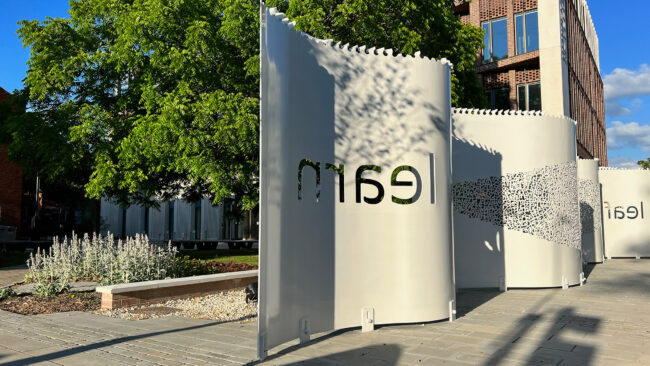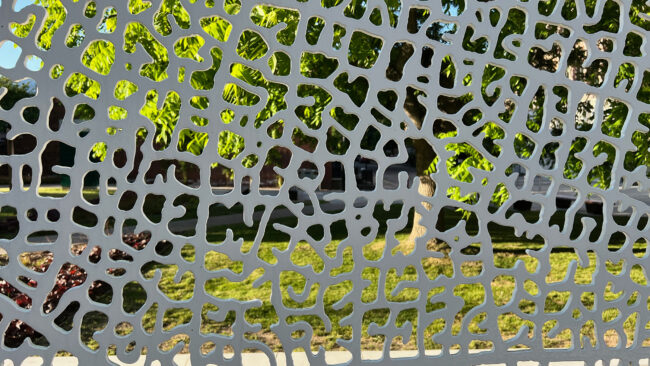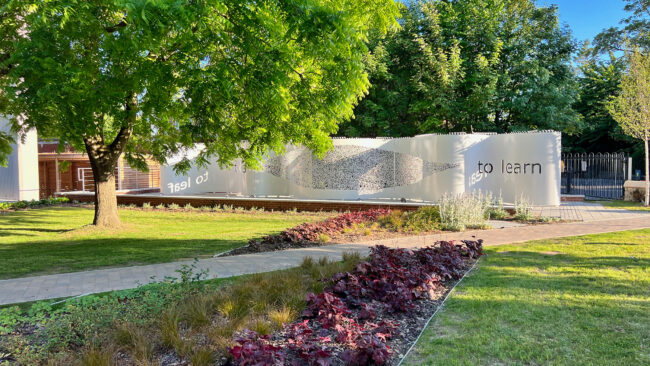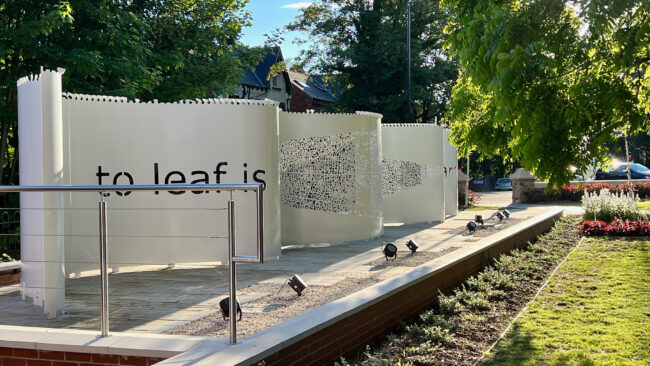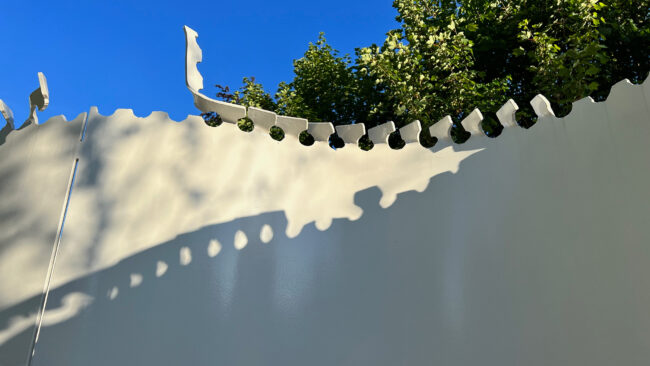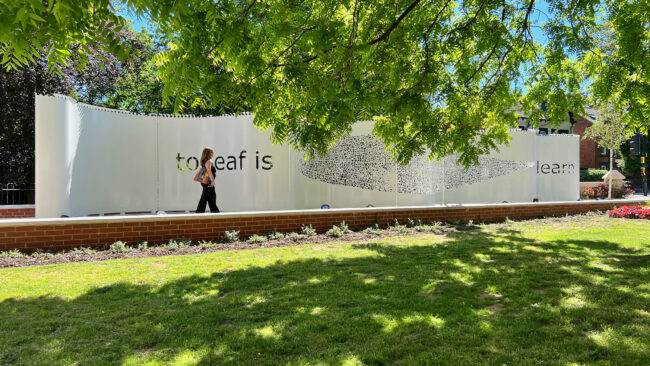CURTAIN at LEEDS UNIVERSITY. UK
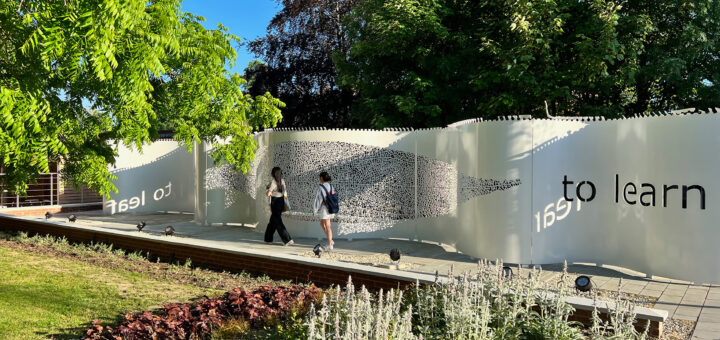
Public art as an instrument for healing spaces
An example:
This sculpture is located at the University of Leeds, a historic campus in the UK.
It is a succession of leaves torn from a notebook creating a serpentine curtain.
This was what motivated me:
The university, with the new construction of its Esther Simpson building, the base of the library, conference rooms, cafeteria, etc., was unhappy with an electrical substation that made the newly created complex look degraded.
For this reason, University commissioned an art project that would cover up or disguise the negative impact of this power station.
Many artists I know would express their annoyance at art being subservient to less than noble functions, such as covering up something ugly. I DO NOT!, I have a belief in public art as an instrument for healing spaces, with the capacity to humanize degraded environments and to improve our physical and social health, our life.
As an artist in the field of public art, I do not reject limitations, all of them are welcome and fully contemplated in my proposals. (This is a topic for another blog entry.)
As usual, I love to complicate my life and a single purpose was not enough, I had to provide the project with the following distinctions: university – study, commitment to the place, identity, marking and function. And all this must have a fluid and clear reciprocal relationship. They must fit each other regardless of the order of relationship.
University / study: Use of notebook leaves, a common element of the realm and student life.
Commitment to the place: Another of the concepts that never leaves me and to which I am faithful, the place and its operation. From the thematic point of view, on this occasion, I substantiated it by using of a sycamore leaf, the tree that stars in that square and before which I observed great respect, not only for using one of its leaves but for arranging my sculpture as a background to extol and enhance its presence and make it clearer. Thus, I create a new reading of the place without altering its essence and form, just by providing an element loaded with content.
Identity: It is one of my aims when undertaking a public art project, the city, the community has to recognize itself in it, otherwise it will only be an element of ornament, mere decoration, something negative in the long term from several points of view that one day I will comment. Today more than ever artists must create “characteristics” that help to differentiate habitats “non places” that are comfortable and well designed ones as consumer machines but without their own soul.
Marking: Creation of a differential landmark beyond the building, the West entrance of the University of Leeds campus.
Function: The University wanted to minimize the negative impact of the power station, well, “let’s cover it up” create a curtain that kept hidden its objective. The function of a curtain is to cover. Almost always the most direct path is the best solution, without ambiguity, in addition to the most efficient way, “I’ll cover it completely” I thought. I feel very comfortable when I have to order concepts and objects in the resolution of a project.
Throughout the project, the constant reiteration of the leaf concept should be highlighted, both its shape, its references, its ambivalences and its texts and contexts. We see it in the perforation of the sculpture with the vein of a leaf, its reference, the tree that owns the place, the sculpture itself made of leaves, this time from a notebook, and the text that deserves a separate comment and that also cites another meaning of Leaf. I leave it for last as I do with the tastiest bites.
The Text is the work of the renowned poet Simon Armitage, who had the patience and generosity to create it in very limited parameters, with the project almost done when he joined, Simon Armitage did not reject the limitations either and as I say, with great generosity and talent he created the sentence: TO LEAF IS TO LEARN.
He substantially enriched the piece, now I can say that it is so loaded with content that it will always remain active and evocative.
Thank you very much Simon.

